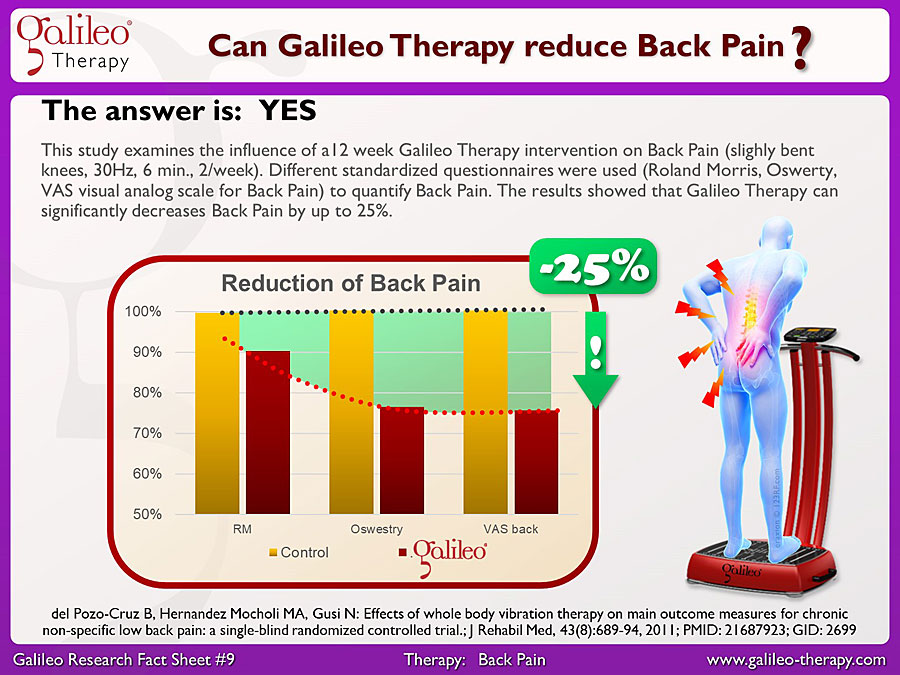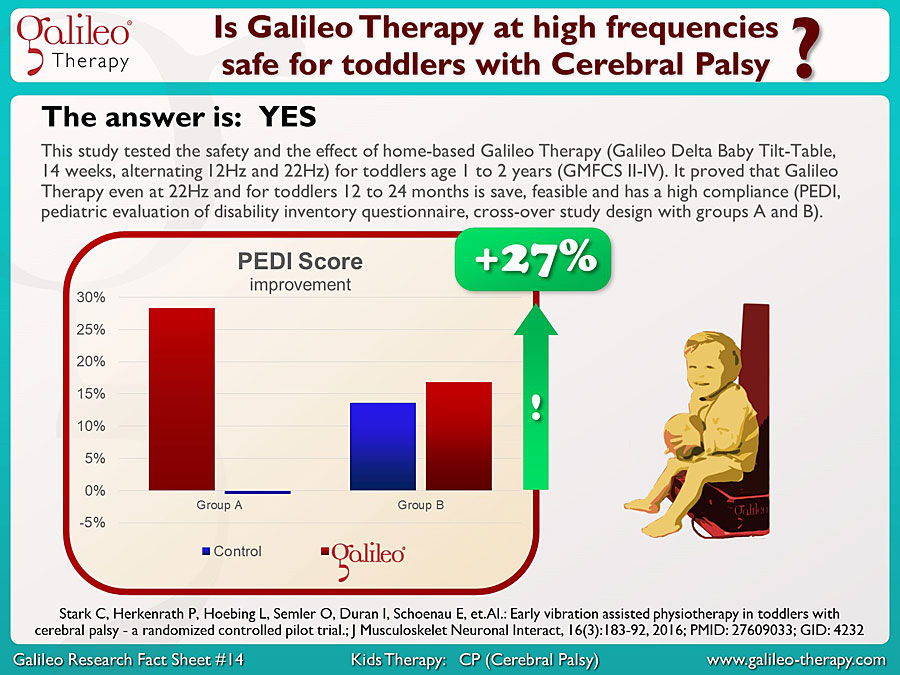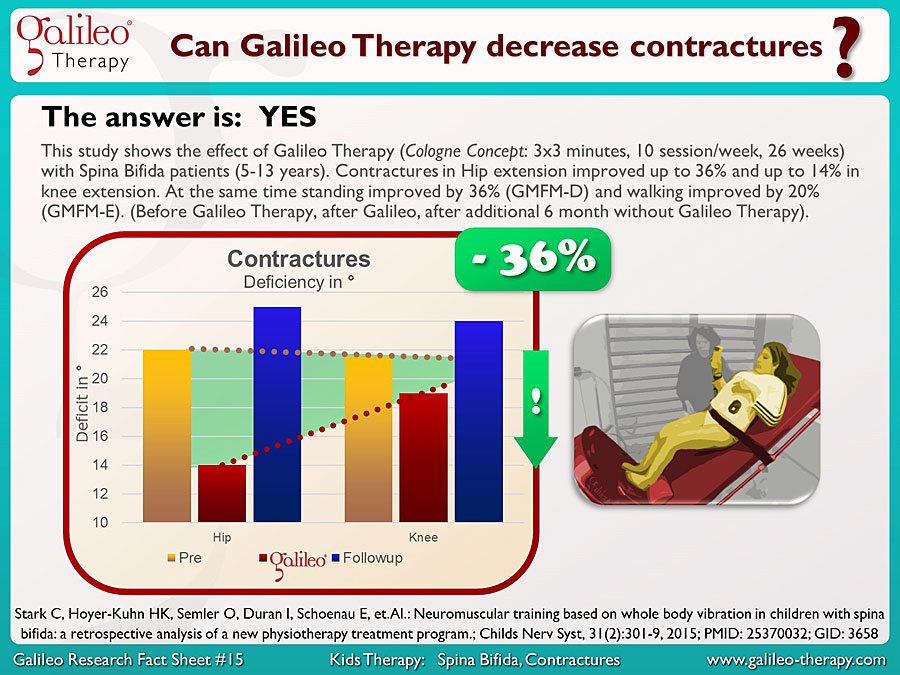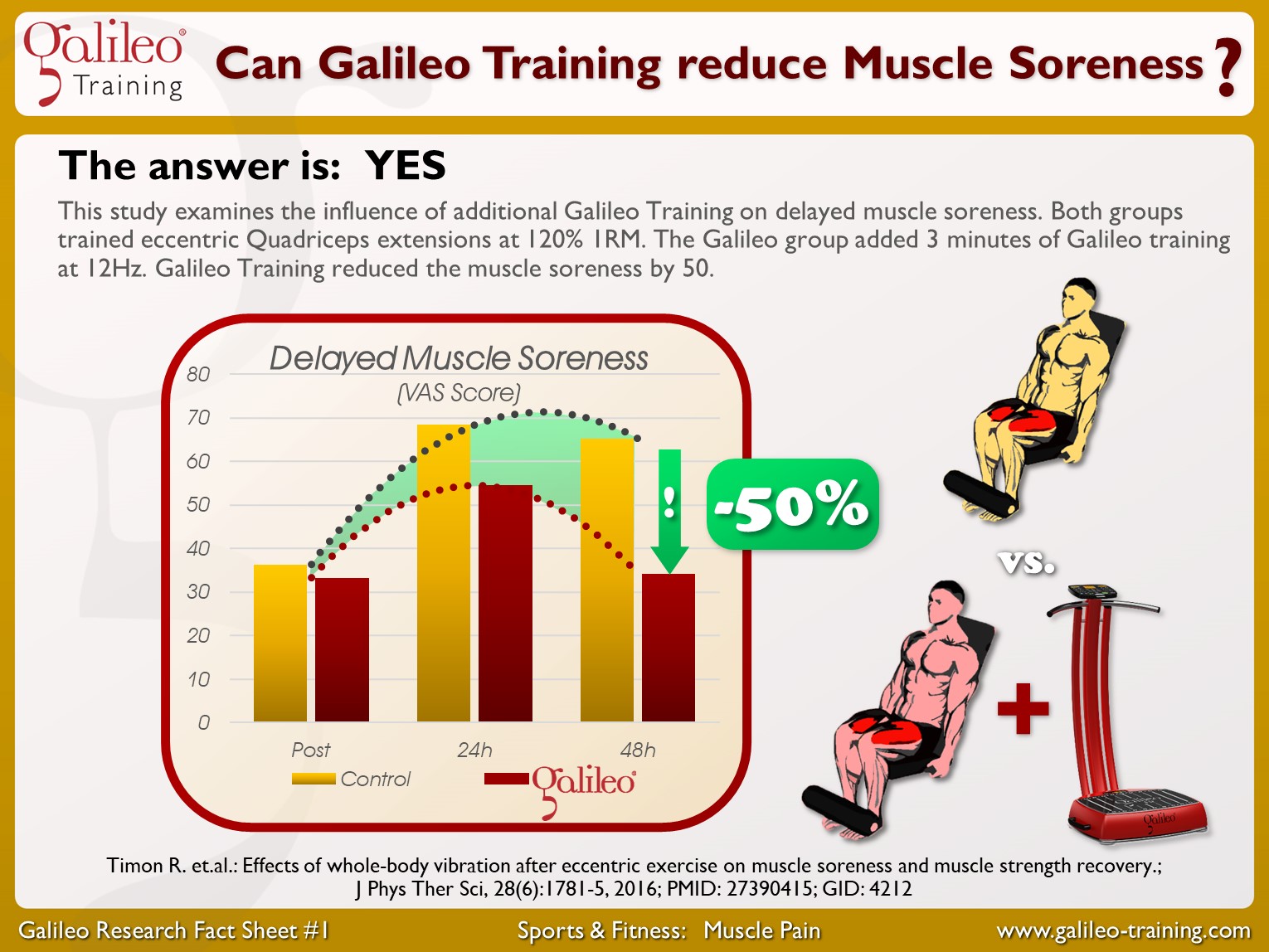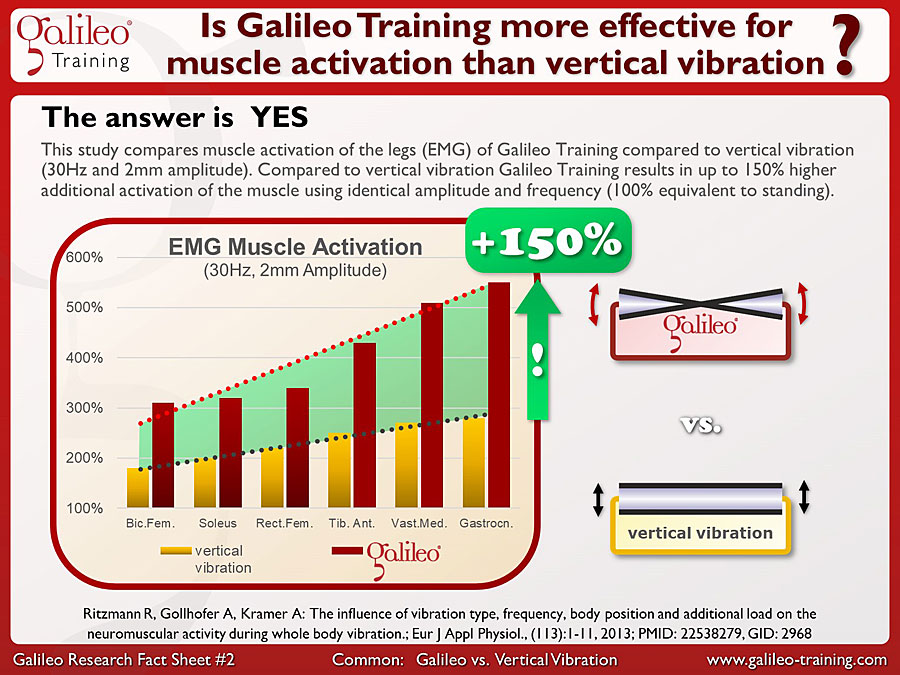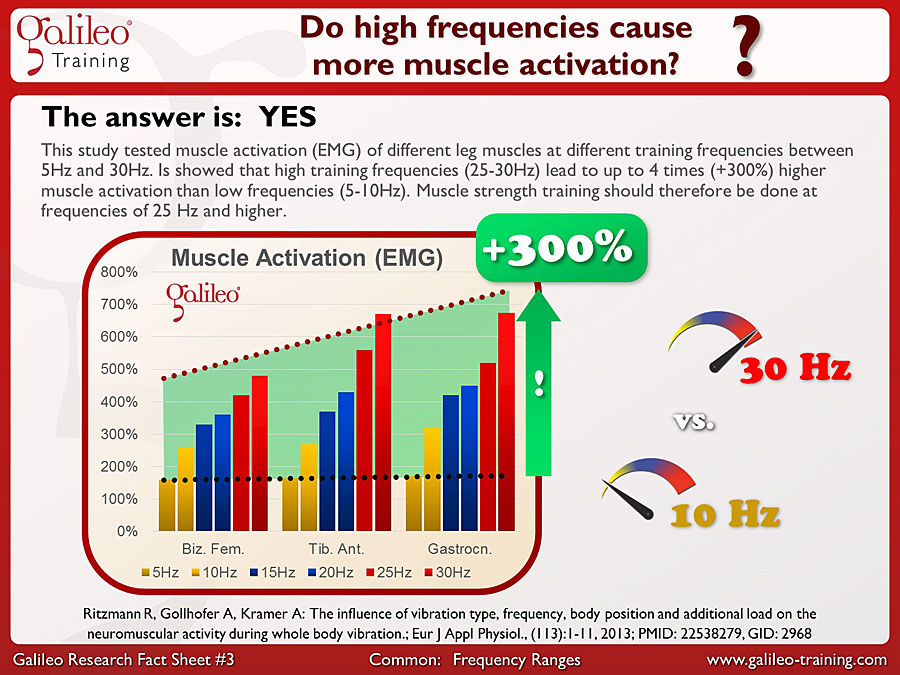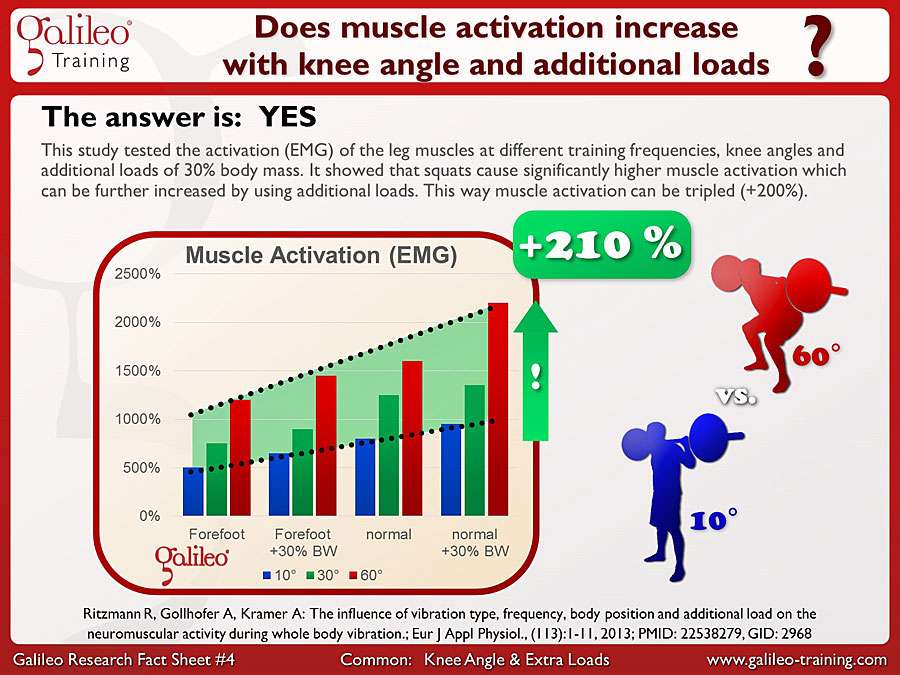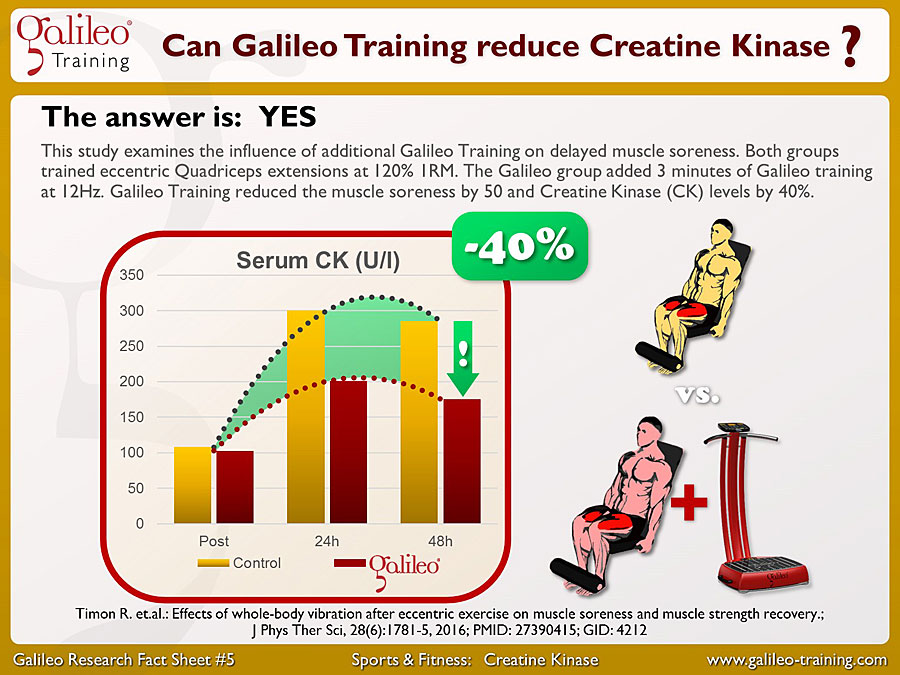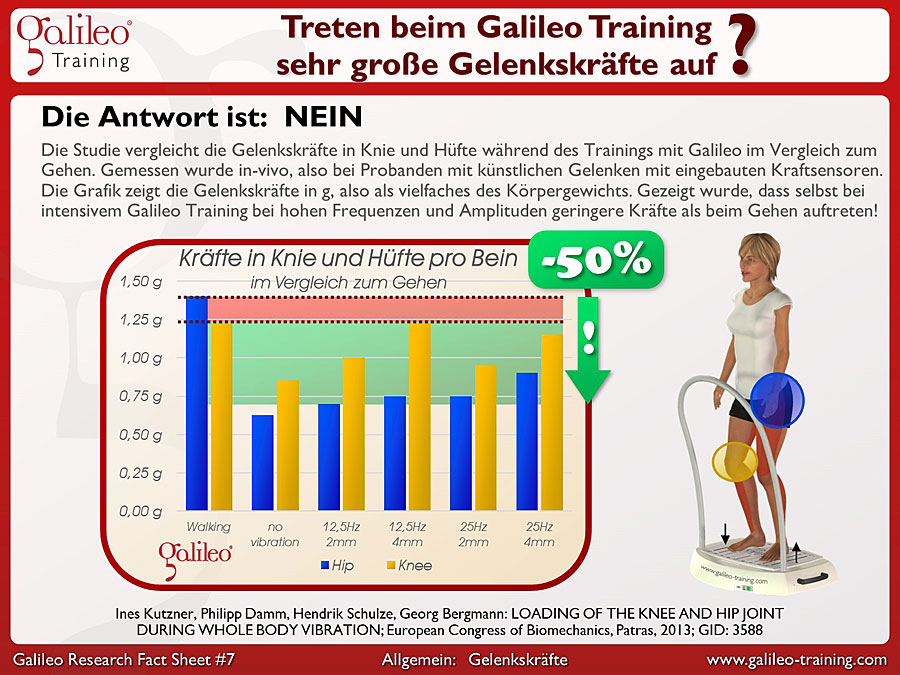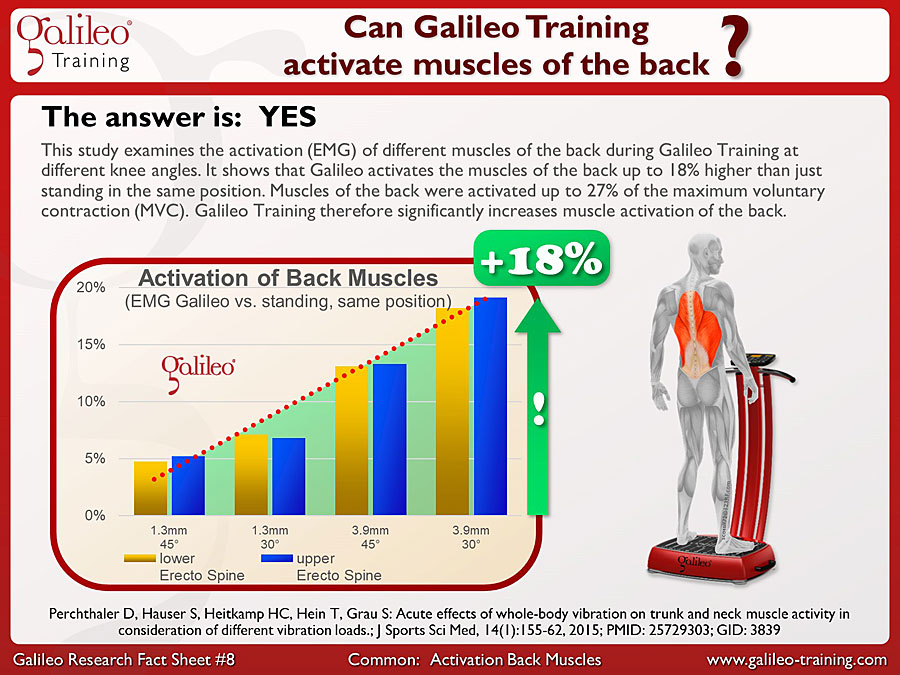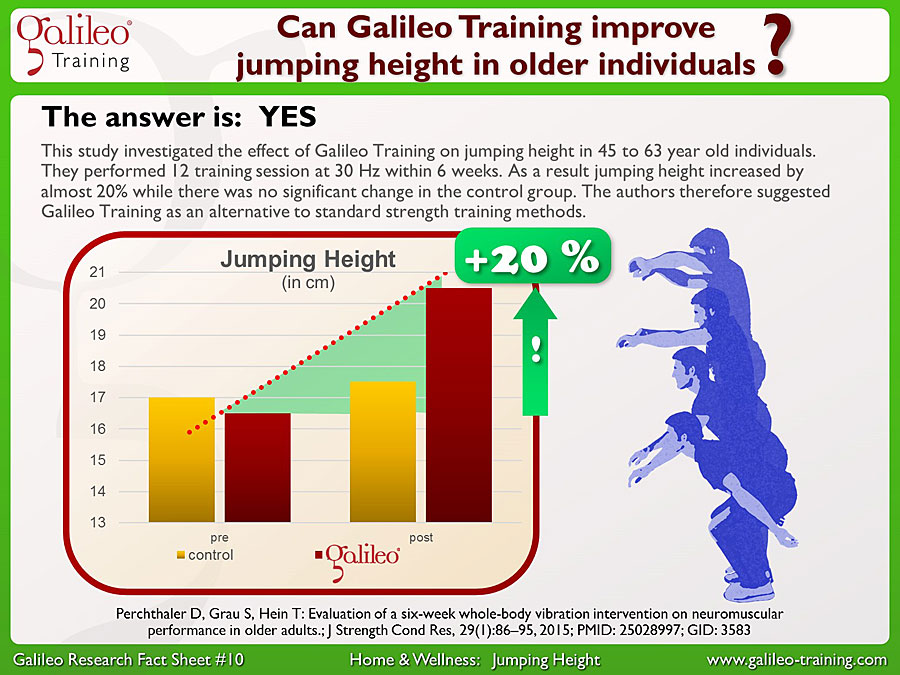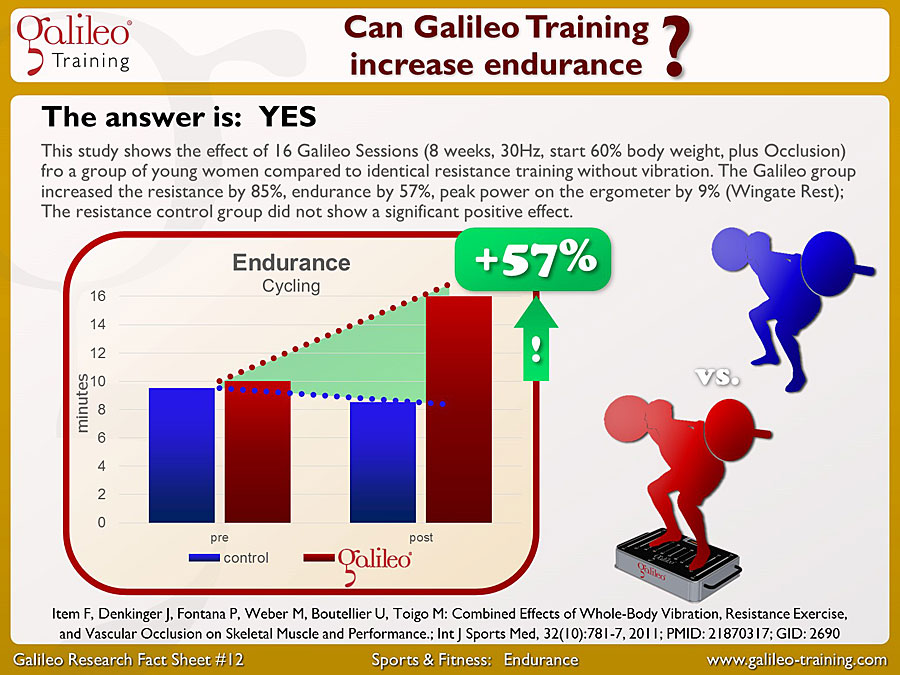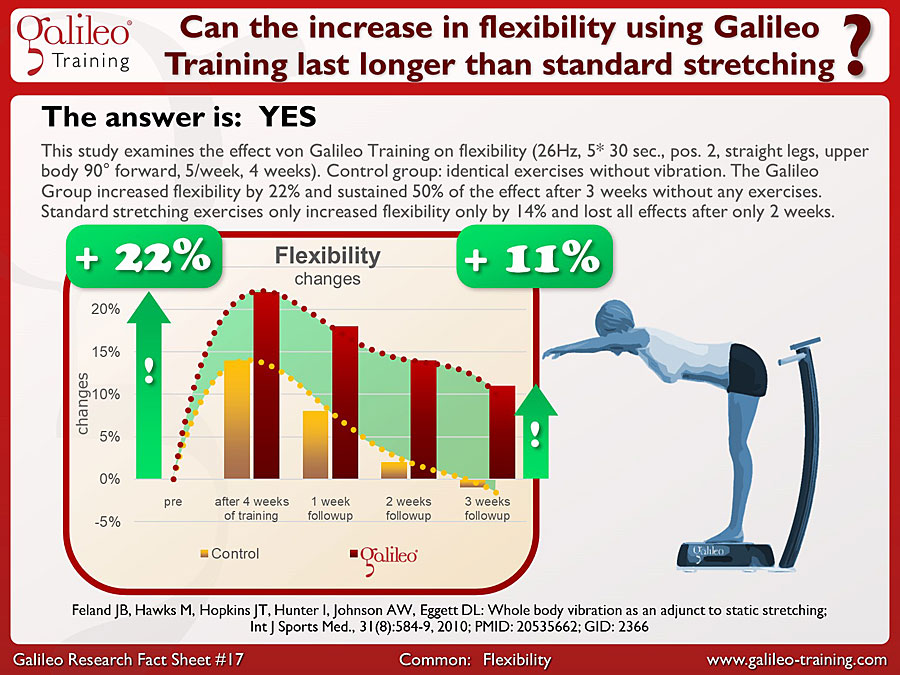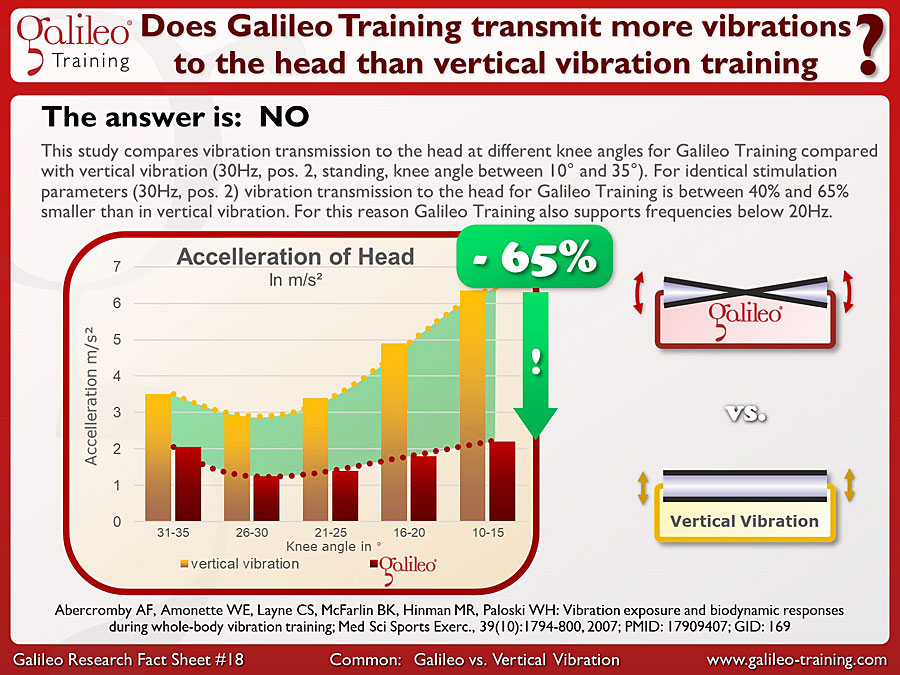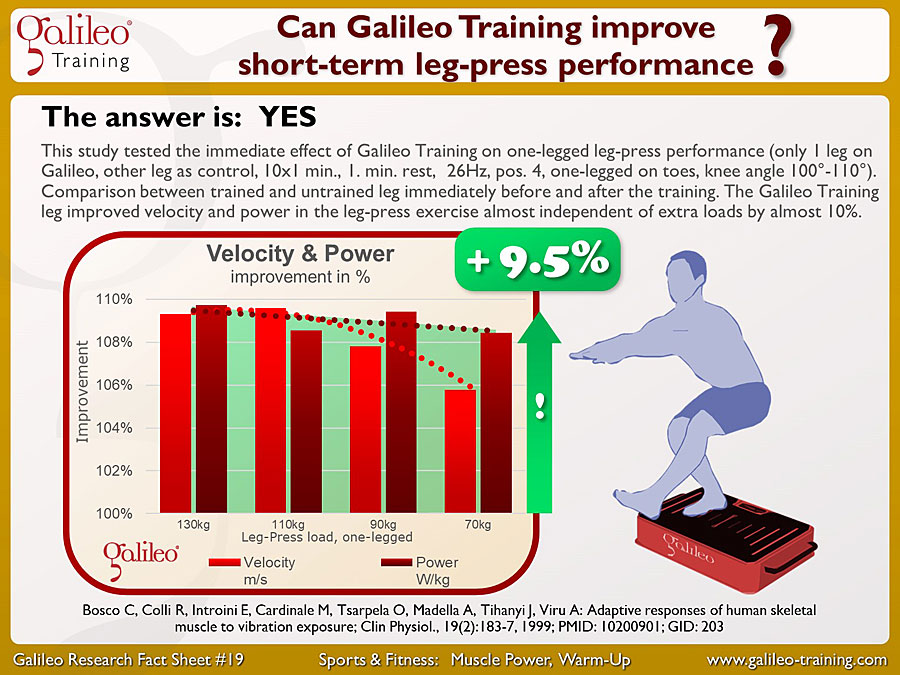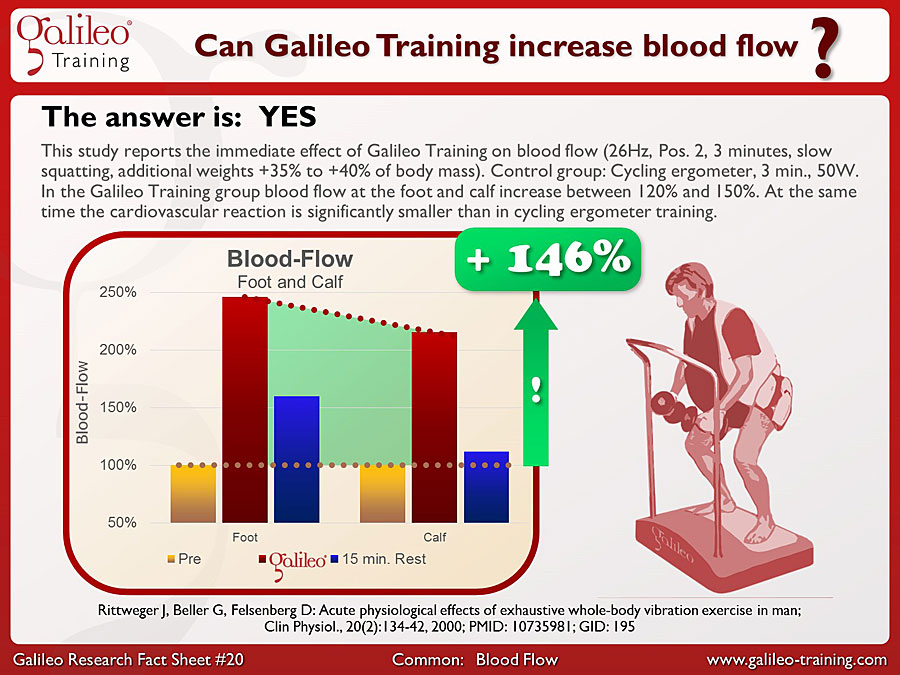Galileo® Therapy
Relationship between frequency and training goal
Regardless of the stimulation frequency, blood flow and microcirculation within the activated body parts are significantly stimulated; in addition, an improvement in flexibility and thus energy storage capacity in the tendon-muscle complex can be achieved.
The stimulation frequency also has a direct influence on the effects of Galileo therapy and must therefore be selected according to the desired therapy goal for the individual exercise. Please note that the following data may vary individually by a few hertz, e.g. depending on the predisposition and condition of the user.
Depending on the frequency range, the muscle or the body can react in different ways.
The following three frequency ranges of Galileo Therapy are therefore not arbitrarily chosen, but are directly derived from neurology and muscle physiology (biological & mechanical properties of the muscle and its neuronal control).

Do you have further questions about the basics of Galileo® Therapy?
Simply arrange a non-binding consultation.
Medium frequencies (approx. 12-20 hertz)
The therapy goal at medium frequencies of 12 to 20 Hertz (oscillations per second) is the muscle function as such.
Galileo® Therapy effects at 12-20 Hz
- Improvement of muscle function
- Improvement of coordination
- Muscle relaxation
- Reduction of contractures
- Relaxation of the back muscles and reduction of back pain
- Pain reduction
- Muscle relaxation, reduction of muscle soreness
- Body awareness
- Reduction of spasticity (spasticity management)
- 12-14 Hz: Lymphatic drainage (with surgical stockings)

High repetition rates
At a stimulation frequency of, for example, 15 hertz, the time between two reflex cycles is about 67 milliseconds (thousandths of a second). After the reflex-controlled contraction, the remaining time until the next contraction is thus sufficient for the muscle to relax again (in contrast, the average physiological time for a complete contraction/relaxation cycle is approx. 50 milliseconds).
This is particularly important when the basic functions of the muscle, namely both contraction and relaxation ability as well as coordination shall be effectively challenged. Due to the large number of repetitions (e.g. 3 minutes Galileo therapy at 20 Hertz = 3600 cycles per leg, i.e. a total of 7200 steps), the improvement of muscle functions can be achieved considerably faster than with most other therapy methods such as resistance training therapy.

Loosening and relaxation
The reflex muscle contractions that can be triggered by Galileo can extend all the way up the back, depending on the posture. Galileo effectively helps to release stiff and hurting muscles, to stretch the shortened muscle-tendon apparatus, for example in the case of contractures, and to improve the coordination within the muscle chain significantly at the same time. This is the reason why Galileo Therapy can improve flexibility, stretching ability and posture in the long term. After a Galileo unit, many users feel good, walk "like on air", are refreshed and full of energy - very good prerequisites for an all-round good body feeling.
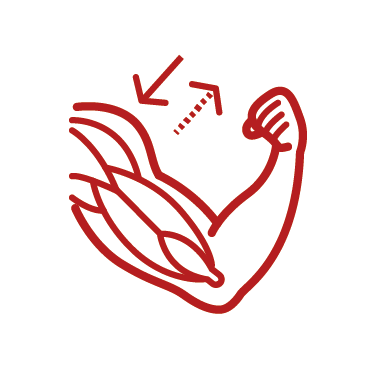
Reflective activation of the muscle chain
A decisive factor here is that muscle activity in Galileo Therapy does not have to be controlled voluntarily, but can be reflex-based and therefore largely uninfluenced by the patient's will. This ensures that the control circuits consisting of muscle ligaments/tendons/cartilage nerves can improve independently. At the same time (depending on the posture) the closed muscle chain and thus its coordination is stimulated.
A crucial prerequisite to improve coordination using Galileo Therapy is that the entire muscle chain can be stimulated in a physiologically meaningful pattern, similar to that of the human gait. Therefore, we also speak of a mechano-stimulation of the musculature or the neuromuscular system.
High frequencies (approx. 25-40 hertz)
High frequencies between 25 and 40 Hertz are used in Galileo therapy to build up muscles, increase muscle power and endurance.
Galileo® Therapy effects at 25-40 Hz
- Tonus increase
- Increasing muscle power (energetic expenditure)
- Increasing muscle force or recovery after immobilisationIncreasing muscle force or recovery after immobilisation
- Increase muscle mass
- Increase endurance
- Promotion of blood circulation
- Body awareness
- Reduction of active spasticity (reduction of spinal excitability)

Efficient exhaustion
At high frequencies, there is insufficient time for the muscle to achieve complete relaxation within the short time between two cycles. Rather, the muscle is always forced to contract again when it is about to relax again or is already partially relaxed. As a result, more and more muscle fibres / motor units have to be recruited.

Coordination & Training
In addition, inter- and intramuscular coordination can be improved during larger forces within very short periods of time, which ultimately leads to an increase in muscle power.
Many years of experience with Galileo Therapy, especially with top athletes, show that a maximum frequency of up to 33 Hz is sufficient for most users. However, for ambitious hobby athletes, for example, and especially for athletes, frequencies up to 36 Hz or 40 Hz can achieve an even higher exertion.

Stimuli for muscles and bones
The reflex muscle contractions that can be triggered by Galileo can extend all the way up the back, depending on the posture. Depending on the level of the selected training frequency, the workout can be extremely intensive and the muscles can therefore be exhausted quickly. This exhaustion sets the stimulus for effective muscle building and improvement of muscle power. Last but not least, an efficient musculature is important to prevent falls. High muscular forces acting on the bone also promote bone preservation as well as bone formation.
Low frequencies (approx. 5-10 Hertz)
Low frequencies between 5 and 10 hertz are used for balance and mobilisation and demand voluntary access (especially neurological areas of application).
Galileo® Therapy effects at 5-10 Hz
- Detonisation
- Muscle relaxation
- Mobilisation
- Improvement of balance (proprioception)
- Voluntary muscle activation (neurologically very demanding)
- Body awareness

Voluntary muscle activation
At low frequencies, the movement of the Galileo systems is not fast enough to trigger significant stretch reflexes. Due to the dominant voluntary compensation of the rocking movement, low frequencies can therefore be used in particular for relaxation, but also for improving balance or proprioception. They manifest themselves in the body through a significantly increased movement of the hip, for example. Due to the comparatively large range of motion with simultaneously low muscle activation, low frequencies are therefore also well suited for mobilisation.

Balance & Proprioception
At low frequencies, the stretch reflex is largely inactive and therefore cannot have a supportive effect. This demands voluntary access to the muscles, which is particularly noticeable during balance exercises. This effect can be further enhanced by the optional wobble function (random, stochastic frequency change) and thus comes much closer to unpredictable everyday situations.

Low frequencies in neurology
Because the stretch reflex is not dominant at low frequencies and therefore voluntary access to the muscles is required, this frequency range is usually the most difficult and therefore the most demanding, especially for neurological patients.
Especially in neurological patients, it is therefore necessary to increase from easy to difficult, i.e. from medium to high to low stimulation frequencies.

Do you have further questions about the basics of Galileo® Therapy?
Simply arrange a non-binding consultation.
You would like to learn more about the background of Galileo® Therapy?n ?
Choose one of the following topics:
Frequency ranges
and their effect
Galileo basic exercises
Let Galileo® Therapy convince you!
Numerous scientific studies prove the effectiveness of therapy with Galileo.
Benefit from the knowledge gained from 25 years of experience and from over 500 scientific publications on Galileo worldwide.

